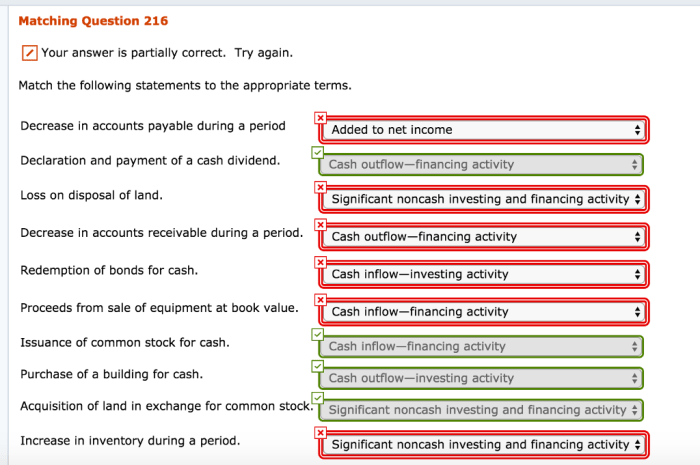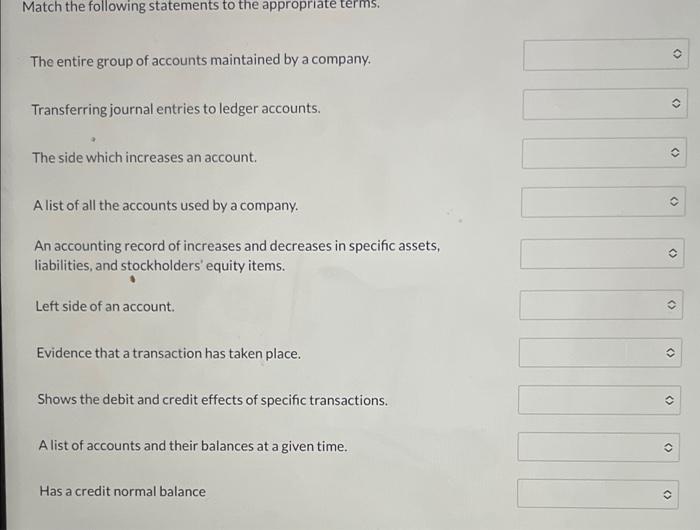Match the following statements to the appropriate terms. – Matching statements to their corresponding terms is a fundamental skill that enhances understanding, improves communication, and facilitates problem-solving. This comprehensive guide delves into the concept of matching statements and terms, exploring various methods, applications, and effective techniques.
Matching Statements and Terms

Matching statements and terms is a fundamental task in various domains, including education, research, and data analysis. It involves establishing correspondences between two sets of entities based on their semantic or conceptual relationships.
The process of matching statements and terms can be applied to a wide range of tasks, such as:
- Answering multiple-choice questions
- Mapping concepts to definitions
- Identifying synonyms and antonyms
- Classifying data into categories
- Translating languages
There are several methods for matching statements and terms effectively, including:
Manual Matching
Manual matching involves comparing statements and terms manually to identify their relationships. This method is often used when the number of statements and terms is small, or when the relationships between them are complex and require human judgment.
Automated Matching
Automated matching uses computer algorithms to match statements and terms based on their semantic or syntactic features. This method is often used when the number of statements and terms is large, or when the relationships between them are straightforward and can be defined by rules.
Hybrid Matching
Hybrid matching combines manual and automated matching techniques. This method is often used when the number of statements and terms is large and the relationships between them are complex. In hybrid matching, the computer algorithm performs the initial matching, and then a human reviewer checks the results and makes any necessary adjustments.
Matching statements and terms can have various applications, including:
Enhanced Understanding
Matching statements and terms can help individuals understand the relationships between concepts and ideas. This can be useful for students learning new material, or for researchers trying to make sense of complex data.
Improved Communication
Matching statements and terms can help people communicate more effectively. This is because it ensures that everyone is using the same terms to refer to the same concepts.
Facilitated Problem-Solving
Matching statements and terms can help people solve problems more effectively. This is because it can help them identify the key concepts and relationships that are relevant to the problem.
Tips for Effective Matching, Match the following statements to the appropriate terms.
Here are some tips for matching statements and terms accurately and efficiently:
- Identify the key concepts in each statement and term.
- Look for relationships between the key concepts.
- Consider the context in which the statements and terms are being used.
- Use a variety of matching methods to ensure accuracy.
- Check your results carefully.
Quick FAQs: Match The Following Statements To The Appropriate Terms.
What are the key considerations when matching statements and terms?
Identifying key concepts, recognizing relationships, and avoiding common pitfalls are crucial considerations when matching statements and terms.
How can matching statements and terms enhance understanding?
Matching statements and terms helps clarify concepts, establish connections, and improve retention, leading to a deeper understanding of the subject matter.

